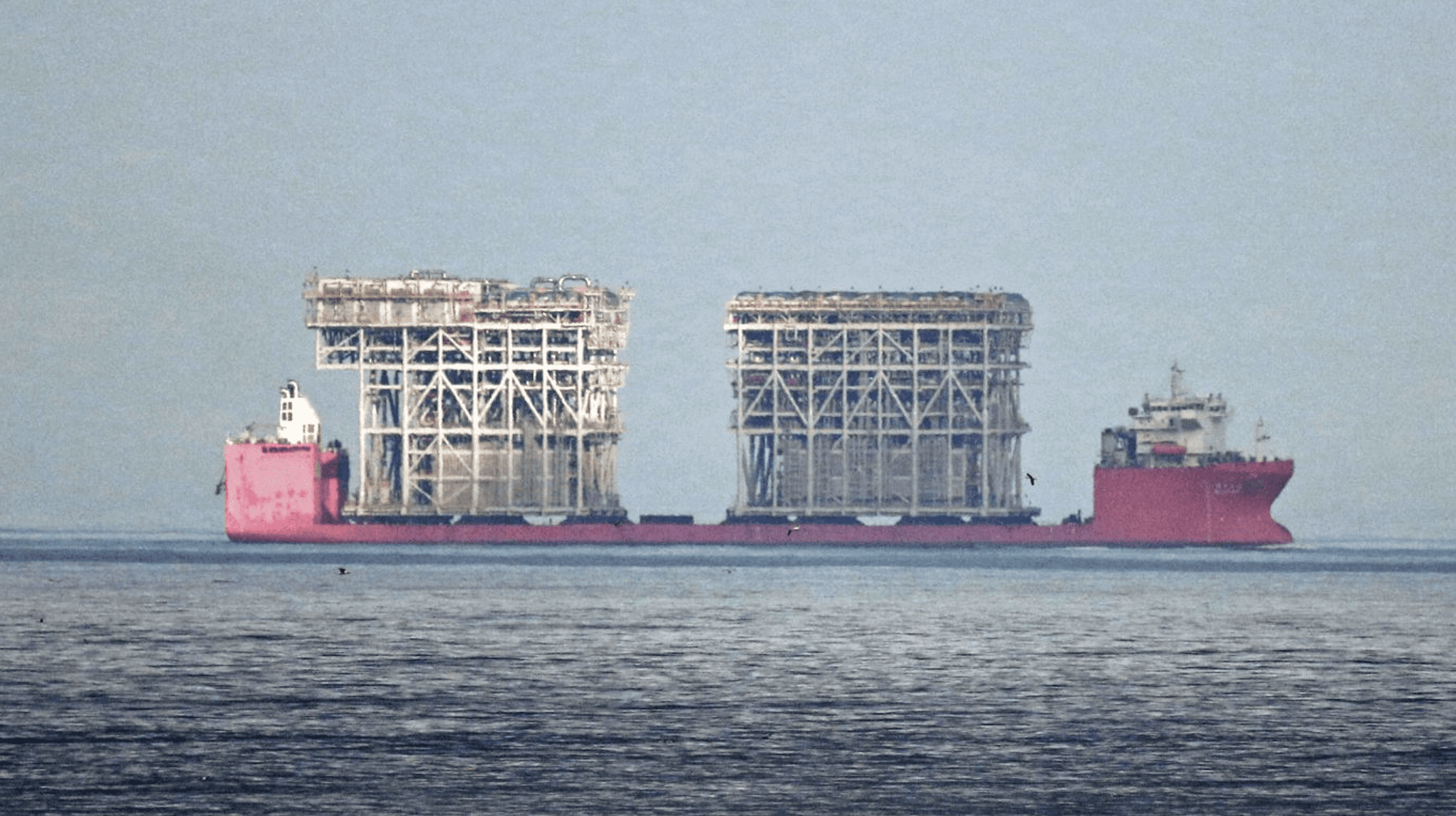In a significant setback to Russia's Arctic energy ambitions, a Chinese heavy lift vessel has returned to port after a 10-month journey, still carrying its original cargo of critical LNG modules, gCaptain reports.
The development marks a decisive victory for US sanctions aimed at curtailing Russia's expansion in the liquefied natural gas sector.
The vessel's route
The vessel Wei Xiao Tian Shi
arrived at Dongzao Gang port near Nantong, China, on 19 January 2025, carrying two massive industrial modules manufactured by Wison New Energies. These modules, each weighing over 12,000 tons, were originally destined for the third train of Russia's Arctic LNG 2 project, a flagship venture by energy giant Novatek.
The vessel's odyssey began in March 2024 when it departed from Wison's Zhoushan yard. Taking a circuitous route via South Africa to avoid European waters, the ship made it as far as the Faroe Islands before abruptly turning back in July 2024. The sudden change in course highlighted the growing complexity of the sanctions environment surrounding Russian energy projects.
The modules' journey back to China was not straightforward. For nearly five months, the vessel navigated Chinese waters, first near Hainan Island and later around Qingdao, making several unsuccessful attempts to unload its cargo.
The scope of sanctions impact
"This represents a significant victory for the sanctions regime," says Dr. Sarah Chen, an energy policy expert at the Pacific Maritime Institute. "The inability to deliver these crucial components effectively places the third liquefaction train of Arctic LNG 2 in limbo."
The situation grew more complicated when the US Treasury Department sanctioned Wison's Zhoushan yard in January 2025, citing its material assistance to the Arctic LNG 2 project. This came despite Wison's earlier announcement that it had ceased work with Russia – a claim later undermined by the company's continued delivery of modules for the project's second train in October 2024.
The fate of the returned modules remains unclear. Wison has not responded to requests for comment regarding its plans for these components nor for
four additional modules still at its Zhoushan yard. The company's attempts to sell its entire equity stake in the Zhoushan division, announced in June 2024, have thus far been unsuccessful.
This development occurs against the backdrop of broader international efforts to restrict Russia's energy sector. The Arctic LNG 2 project, valued at $21 billion, represents a crucial piece of Russia's strategy to expand its LNG export capabilities and maintain its position in global energy markets despite Western sanctions.
The modules' lengthy return to China also highlights the growing reluctance of Chinese companies to risk secondary sanctions, even as Beijing maintains an officially neutral stance on the conflict.
For Russia's Arctic LNG 2 project, the loss of these critical components poses significant challenges to the completion of its third liquefaction train, potentially affecting the project's overall production capacity and timeline.
Related:
- UK “rapidly developed” new naval drones for Ukraine
- Ukraine’s ranger corps receives tanks for special operations
- Politico: US Defense Secretary Hegseth to attend NATO Ukraine meeting, but no new arms expected
- Kellogg: Trump ready to double down on Russian sanctions




